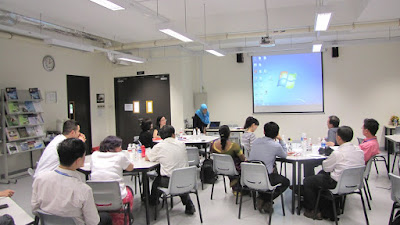Assalamualaikum,
Dalam posting kali ini, saya hanya akan membincangkan teknik menulis inferens (inference), iaitu salah satu bentuk soalan dalam Kertas 2 Science PMR.
Apa itu inferens?...
Daripada segi bahasa formalnya, inferens adalah "kesimpulan awal". Tapi, untuk lebih memahaminya, dalam bahasa tidak formal bermaksud "sebab yang mungkin". ini bermaksud, bila timbul sesuatu permasalahan, kita mungkin akan cuba meneka-neka pelbagai sebab yang dirasakan relaven dengannya. Namun, ia masih tidak boleh dianggap sebagai "sebab yang betul" selagi tidak dijalankan sebarang penyiasatan (eksperimen) ke atasnya.
Sebagai contoh:
Lihat gambar di bawah.
Dalam posting kali ini, saya hanya akan membincangkan teknik menulis inferens (inference), iaitu salah satu bentuk soalan dalam Kertas 2 Science PMR.
Apa itu inferens?...
Daripada segi bahasa formalnya, inferens adalah "kesimpulan awal". Tapi, untuk lebih memahaminya, dalam bahasa tidak formal bermaksud "sebab yang mungkin". ini bermaksud, bila timbul sesuatu permasalahan, kita mungkin akan cuba meneka-neka pelbagai sebab yang dirasakan relaven dengannya. Namun, ia masih tidak boleh dianggap sebagai "sebab yang betul" selagi tidak dijalankan sebarang penyiasatan (eksperimen) ke atasnya.
Sebagai contoh:
Lihat gambar di bawah.
Apa yang kita dapat perhatikan, Gerai Q lebih panas berbanding P.
Namun, kenapa jadi begitu?? ----- So, what is the inference for this situation?
Kalau nak jawab soalan inferens, kita perlu ingat tips di bawah:
Contoh jawapan:
Stall Q is hotter because it is painted with darker colour
"Stall Q is hotter" ialah pernyataan bagi "difference"
manakala,
"it is painted with darker colour" ialah "reason"
Kalau masih belum jelas, cuba buat banyaaaaak latihan untuk soalan seperti ini sahaja.
Kita cuba satu lagi soalan, ok??
Candle Y is extinguished faster than candle X.
Give an inference for this experiment.
Berdasarkan gambarajah di atas, lilin Y akan padam terlebih dahulu. Kenapa lilin Y padam dahulu (inferens)?
Untuk jawab soalan ini, gunakan tip yg telah di beri di atas.
Contoh jawapan:
Candle Y extinguished first because there is less oxygen in beaker Y.
(........... difference........) (........... reason ...............)
Cuba pula soalan di bawah:
What is the inference for this experiment?
Adakah jawapan anda sama dengan jawapan saya di bawah???...
"The water level rises because it replaces the volume of oxygen that was used up."
(..... observation ....) (................ reason ...............)
Sebagai latihan tambahan, cuba pula soalan-soalan di bawah.
Walaubagaimanapun, saya tidak akan menyertakan sebarang jawapan. Anda boleh cuba menjawabnya di ruangan komen.
1. After 30 minutes, the temperature in conical flask B is higher than the temperature in conical flask A. Give an inference for the situation in conical flask B.
2. Give an inference for torch light W.
3. What is the inference for this experiment?
Selamat Mencuba ^_^
credit to cikgunurul...










































